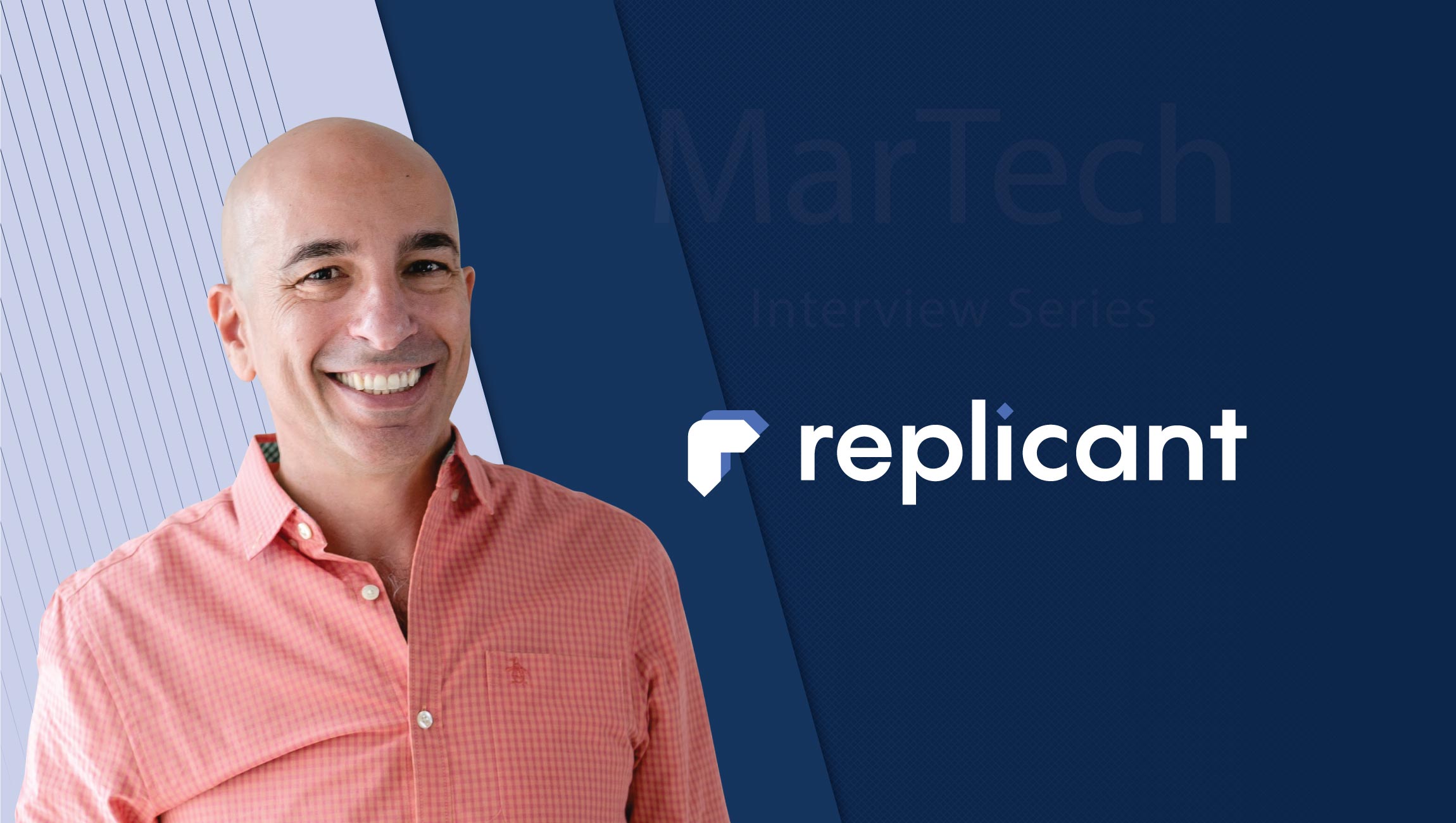“In the near future, we will see a more automatic and streamlined supply chain, where automation takes care of the majority of the process across all steps of the employee and customer journey.”
[/vc_wp_text]
Hi Gadi, tell us about your journey and how you arrived at Replicant.ai.
I got involved in the Contact Center space almost six years ago when I met the Founder and CEO of Talkdesk. Back then, most call centers were using on-premise software, but Talkdesk offered the only call center software that could run in a browser. I joined the company as its COO and helped it grow from a seed-stage company with a few employees to a unicorn. During this time, I learned a lot about customer service (anecdotally, I ran a small call center in my early 20s) and fell in love with this space again.
When I left Talkdesk, I decided that whatever I did next should involve AI. Predictive machines and AI can boost productivity by taking on repetitive tasks that humans do poorly, allowing humans to focus on complex and creative assignments. Bringing AI to contact centers seemed like a great idea, as contact center employees have to perform many repetitive tasks and are often unable to really connect with customers due to high call volumes. Now, with COVID-19, we see an even greater demand for Virtual Agents, AI and Automation, so these are exciting times to be in this space.
What is Replicant.ai and which industries are you offering your services to?
Replicant.ai has built a Voice AI platform that is designed to solve tier-one customer service problems over the phone. Replicant integrates into call center software and CRMs and can answer calls, resolve issues and transfer more complex calls that require a live agent, in real-time.
We have customers across industries like Insurance, E-commerce, Consumer goods, Collaborative Economy, and more. The important part is not the industry, but the call flows we take over. When a company has high volumes of repetitive calls, we can provide help in a short period of time, and resolve issues end-to-end without human intervention.
We are seeing the importance of contactless delivery, robotic automation, and mobile app analytics in E-commerce shipping fulfillment. How does Replicant.ai enable customers to leverage these technology platforms?
These are all very complementary technologies. In the last 100 years, technology has consistently elevated the work we do as humans by taking over more and more mundane tasks. In the Automotive industry, mechanics no longer manually assemble car parts. In the Financial Services industry, bank tellers no longer dispense cash on behalf of customers.
Instead, automotive employees now go through extensive training to manage complex robots, while bank tellers focus on providing investment advice to customers. In the near future, we will see a more automatic and streamlined supply chain, where automation takes care of the majority of the process, reserving humans for complex deliveries, or complex problems across all steps of the employee and customer journey.
You mentioned Salesforce and Zendesk agents in your recent PR. Tell us more about the challenges of a modern call center.
Where do I begin? Most of the challenges of the modern contact center are the same challenges we faced a decade ago. Most of them still require agents to show up to an office and work from a desk and most calls are repetitive in nature. A call center employee may take 60 calls a day, and in 58 of them, just type information into a CRM system.
Salesforce and Zendesk help by providing a more holistic view of the customer but they don’t resolve the underlying issue which is the nature of the calls and inefficiencies around repetitive work.
What is the future of AI, ML and Robotics in Call Center Conversations, Order Fulfilment and Shopping experiences?
E-commerce is very transactional in nature, and it is one long chain of processes that can all be impacted by AI. Predictive machines can predict demand and order the items your customers are most likely to purchase. Different AI models can organize your warehouse in a way that reduces the journey a packager has to go through to assemble your products prior to delivery. In the future, robots will pick items (currently robots are still not good at handling uniquely shaped objects) autonomously.
For an e-commerce company, much of customer service can be automated, as many of the calls are transactional; change an order date, change a delivery address, add or remove an item, return an item, ask for a different size, etc. All of these tasks can be easily handled by AI, reserving agent capacity for the more complex and emotional resolutions.
In a customer service-driven economy, how hard will it be for businesses to sustain against COVID-19?
Many of our customers are seeing a spike in call volume, paired with fewer available agents due to local lockdowns. For these customers, we offer our AI Voice Responder that can be deployed in days and provides immediate relief by triaging calls, sending the most important calls to live agents, collecting information and creating follow up tasks.
Coming out of this crisis, companies will need to develop a more elastic cost structure and customer service capabilities and AI can be the answer to that. AI can flex from answering 100 calls an hour to answering 1000 calls an hour in no time.
Imagine an e-commerce company that sells travel gear and suitcases. In March, this company may have seen a spike in calls as people return gear due to canceled travel plans. In May, they could see a spike of business if travel bans are lifted, only to see a decline again as a result of widespread unemployment. This company will need to implement elastic capacity and cost models to capture demand when it comes, without committing to a long-term fixed-cost model.
COVID-19 has brought many businesses to a standstill. What impact has it made to your business?
We have seen many long-term projects put on temporary hold, but at the same time, a greater demand for a simple “Thinking Machine” that can flatten the curve now, and help impacted contact centers down the road. We were able to launch an AI Voice Responder in two business days and provide immediate relief to our customers, which is typically unheard of in the AI space.
How are you planning to bounce back – Any suggestions for your industry players, customers and technology providers, in general?
My best advice is to think in 60-day time horizons. Things change so quickly that short-term thinking is what everyone should focus on now. In addition, look at your cost model and add as much elasticity to it as you can.
We are talking about a whole new level of flexibility – you no longer can expect a 30 days heads up when you need to ramp your customer service capacity up or down. You may need to react in days or hours, so make sure that you use technology to help you dial in your cost and capacity up or down.
The Call center Technology landscape has evolved massively, transitioning from the dotcom era to the modern mobile. Tell us about the next phase of evolution in this industry.
The call center space has changed much less than you may think. Most of the market is still using the same old products that were used during the dot.com days and agents are still stationed at their desks. I see two main changes happening in the next few years:
- Completing the move to Cloud-based contact center software, so agents can work from everywhere
- Meaningful investments in automation around a large variety of common customer service calls
- Retraining agents to focus on more complex problems, switching from being reactive “fixers” to long-term customer success creators
Tag a person from the industry whose answers you would like to see here–
My business partner @Markus Malti – after all these years, I am sure there are still things that would surprise me. I challenge you!
Thank you, Gadi! That was fun and hope to see you back on MarTech Series soon.
Gadi Shamia is the co-founder and CEO of Replicant, a voice AI platform that solves customer issues over the phone. Prior to Replicant, he was the COO of Talkdesk, where he helped the company grow from a seed stage to a unicorn.
The first company Gadi co-founded, TopManage, was acquired by SAP and today is known as SAP Business One, which is SAP’s core SMB offering. Gadi has also held senior leadership roles at SAP, Adobe, and ReachLocal. He has also held board level roles at EchoSIgn, Intacct, Algolia, and Talkdesk.
Replicant is a leading provider of a conversational AI platform for customer service that instantly solves problems over the phone, improves customer experience, and reduces cost. Headquartered in San Francisco, Replicant was founded on the belief that machines are ready to have useful, complex conversations that will transform the way they interact with the world.











